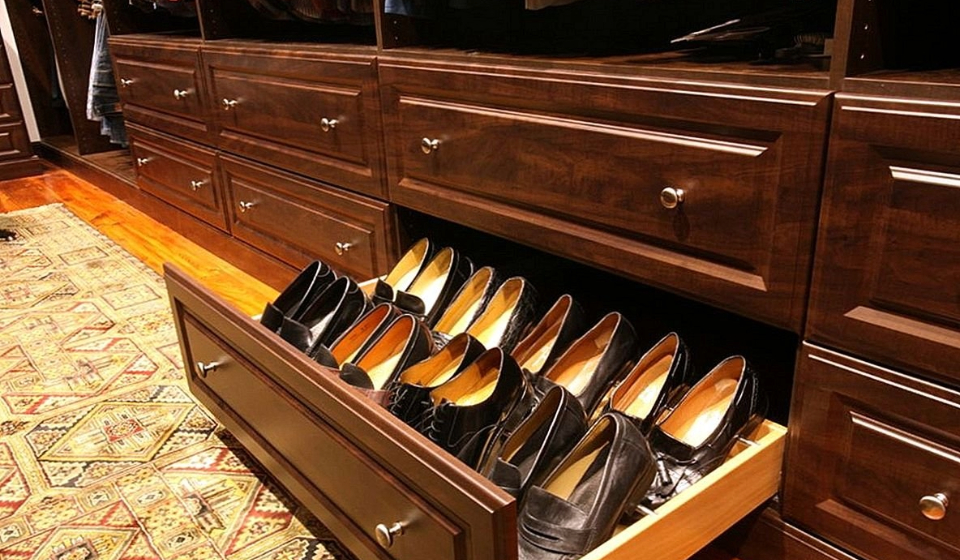Kids Closet: 7 ways organize your kid’s clothes
Introduction
How to create a kid-friendly closet that promotes order, independence, and a love for keeping things tidy?
As parents, we understand the daily struggle of keeping our kid’s clothes neat and tidy while ensuring they have easy access to their favorite outfits.
We will explore seven practical ways to design and organize a kids’ closet, tailored to their unique needs and preferences. Let’s dive in and discover how to create a kid-friendly closet!

1. Categorize & Sort
A well-organized kid’s closet begins with effective categorization and sorting of their belongings. By implementing a systematic approach, you can create a clutter-free space that promotes easier access to clothing and accessories.
Here’s how to achieve it.
Divide clothing into categories
The first step in organizing your kid’s closet is to divide their clothing into specific categories. This makes it easier to find and access different items, streamlining the dressing process for both parents and children.
Common categories include tops, bottoms, outerwear, pajamas, and accessories. You can further break down these categories into subcategories, such as short-sleeve tops, long-sleeve tops, jeans, shorts, etc., depending on the size of your child’s wardrobe.
Sort clothes by size, season & frequency of use
Once you’ve categorized the clothing, further sorting by size, season, and frequency of use helps optimize the closet’s functionality.
- Sorting by size ensures that you can easily find and replace items as your child grows.
- Seasonal sorting allows you to rotate clothes, storing off-season items away until they’re needed.
- Organizing by frequency of use puts everyday essentials within easy reach and less frequently worn items higher or lower in the closet.

2. Closet Dividers
Closet dividers are practical tools that can significantly enhance the organization of your child’s closet. These simple yet effective accessories help separate different clothing categories and maintain order within the space.
Here’s how to make the most of closet dividers.
Use closet dividers to separate clothing categories
Closet dividers are typically circular or rectangular discs that you can easily slip onto the closet rod. They act as visual markers, creating distinct sections for various clothing categories.
By using dividers, you can group similar items together, making it easier for you and your child to find what you need quickly.
For example, you can have dividers labeled with categories like “Tops,” “Bottoms,” “Pajamas,” “Dresses,” and so on. This approach prevents clothes from mingling together and eliminates the need for constant rearrangement, ensuring the closet remains tidy and organized.
Label dividers for easy identification
Labels can be simple stickers or tags attached to the dividers. They help you and your child identify the sections with ease, streamlining the process of selecting outfits.
Labeling encourages kids to participate in keeping their closet organized. It teaches them to recognize different clothing categories and cultivates a sense of ownership over their belongings.
Moreover, labeled dividers allow older children to independently maintain the organization of their closet.

3. Storage Bins & Baskets
Storage bins and baskets are valuable assets in organizing a kid’s closet, providing designated spaces for various items and helping maintain a clutter-free environment.
Here’s how to make the most of storage bins and baskets.
Storage bins for toys & accessories
Integrating storage bins and baskets within the kid’s closet can work wonders in keeping things tidy and accessible. These containers are versatile and can be used for a variety of purposes:
- Toys: If the closet serves as a play area, use bins to store toys and games. By designating specific bins for different types of toys, children can easily find and put away their playthings.
- Accessories: Smaller storage bins can house accessories like hats, scarves, and belts, ensuring these items are neatly organized and always within reach.
- Out-of-season clothes: Use larger bins to store out-of-season clothes or items that are not currently in use. This way, the closet remains clutter-free and focuses on the clothes appropriate for the current season.
Teach kids to put items back in bins
To maintain an organized closet, it’s essential to teach kids the importance of returning items to their designated bins. Implementing this habit from an early age instills a sense of responsibility and organization in children.
Make the process fun and engaging. You can use colorful labels on each bin to indicate its contents and encourage kids to match the items to the corresponding labels.
Consider using clear bins or baskets, allowing children to see the contents easily and recognize where things belong.

4. Adjustable Shelving & Rods
As children grow, their needs and preferences change, including the size of their clothes and the types of items they need to store.
Installing adjustable shelving and rods in a kid’s closet allows for flexibility and adaptability, ensuring that the space can easily accommodate their needs.
Here’s how to make the most of adjustable features.
Install adjustable shelves
One of the key advantages of adjustable shelving is the ability to modify the height of the shelves as needed.
As children grow taller, their clothing items, toys, and belongings change in size, requiring different storage arrangements. Adjustable shelves allow you to:
- Customize storage space: With adjustable shelving, you can create shelves at varying heights to fit different items. This enables you to optimize the space and allocate room for larger clothing items like dresses or jackets, as well as smaller items like folded clothes or toys.
- Adapt to changing needs: Whether you want to make space for a new toy collection or accommodating sports equipment, adjustable shelving allows the closet to adjust to the child’s interests and hobbies over time.
Use adjustable rods
Just like with shelving, adjustable rods offer flexibility in a kids’ closet.
Children’s clothes come in various lengths, and using adjustable rods enables you to hang clothes at child-appropriate heights, making it easier for kids to access and manage their clothing.
Here’s how adjustable rods benefit the closet organization:
- Optimized hanging space: With adjustable rods, you can customize the hanging space for longer garments like dresses or coats and shorter items like shirts or pants. This ensures that each item has its designated spot, making it simpler for kids to maintain an orderly closet.
- Accessibility for kids: Lowering the rods to a child’s height allows them to reach their clothes without assistance. This fosters independence and encourages them to participate in dressing themselves.

5. Create a Dressing Station
Designating a dressing station within a kid’s closet adds a touch of organization and convenience to their daily routine.
This dedicated area provides a space where kids can get ready for the day or prepare for bedtime, making the process smoother and more enjoyable.
Here’s how to create an efficient dressing station.
Dressing space within the closet
Identify a section in the closet that is spacious enough for a dressing station.
This can be a corner or an alcove that offers enough room for easy movement and dressing.
Include a mirror, hooks & chair
A mirror is an essential component of a dressing station. It allows kids to see themselves as they dress up, fostering a sense of self-awareness and confidence. Choose a kid-friendly mirror that is safely secured to the wall or the closet door.
Install hooks within the dressing station area to hang items like bags, hats, or jackets. Having hooks nearby makes it easy for kids to hang up their belongings, keeping the floor and other areas tidy.
Provide a comfortable stool or chair for kids to sit on while putting on shoes or tying shoelaces. This seating option adds convenience and promotes independence as they learn to handle these tasks themselves.

6. Involve Kids
Getting kids actively involved in the organization of their closet can be a fun and valuable learning experience.
By participating in the process, children not only develop essential organizational skills but also take ownership of their space.
Here are some effective ways to involve kids in the organizing process.
Teach kids to put away their clothes after use
Encourage kids to take responsibility for their belongings by teaching them to put away their clothes after wearing them.
Make it a habit to return items to their designated spots in the closet.
Involve them in the organization process
- Sorting and Categorizing: Work together to categorize clothes into groups, such as tops, bottoms, and pajamas. This activity helps them understand the concept of grouping similar items and fosters visual organization.
- Decision Making: Allow kids to have a say in how their closet is organized. Discuss preferences for where specific items should go, such as hanging dresses or folded sweaters.
- Labeling: Create simple labels or use images to identify different sections within the closet. This visual aid helps younger kids recognize where each item belongs and promotes tidiness.
- Decorating: Let kids personalize their closet space with stickers, colorful labels, or drawings. This personal touch makes the closet feel like their own special area and encourages them to maintain its neatness.
- Seasonal Rotation: Involve kids in the seasonal rotation of clothes. When transitioning from one season to another, discuss together which items need to be stored or donated and which ones should remain accessible.

7. Donate or Store Outgrown Clothes
As children grow, their clothing needs change rapidly, and their closet can quickly become cluttered with outgrown or unused items.
To maintain an organized and efficient closet space, it is essential to regularly go through the wardrobe and address these changes.
Here are some tips on managing outgrown clothes.
Remove outgrown or unused items
Set aside time every few months to assess your child’s clothing collection.
Remove any clothes that no longer fit or are rarely worn. It’s a good idea to involve your child in this process, as it teaches them about decluttering and being mindful of their belongings.
Donate or store these clothes
- Donate: If the clothes are still in good condition, consider donating them to local charities, shelters, or organizations that support children in need. Donating not only helps those less fortunate but also instills in your child a sense of empathy and the importance of giving back.
- Store: For sentimental or future use purposes, pack away outgrown clothes in labeled storage bins. Store these bins in an easily accessible place like the attic or a storage closet.
Conclusion
Designing a well-organized and functional closet for kids or teenagers is essential for fostering independence, promoting responsibility, and creating a peaceful environment.
By implementing these strategies, parents can create an organized and kid-friendly closet that enhances their child’s daily routine and helps them develop valuable life skills.
Transform your child’s space into a haven of organization, style, and functionality with MDF Closets.
Book a free consultation today and let us create the perfect closet that reflects your child’s unique personality and keeps their belongings in perfect harmony.
Need a custom closet?
Choose the right closet and experience the blend of style, functionality & organization for your home!
Latest blog posts
We share insights & inspiring ideas to transform your living spaces.

Book a free remote or in home consultations.
We will measure your space, make 2D design & 3D rendering. And it’s all free.
From the comfort of your own home
You & designer will discuss goals, wish list and a budget
Online via Zoom or we’ll visit you at your home
15% discount if you choose online consultations


